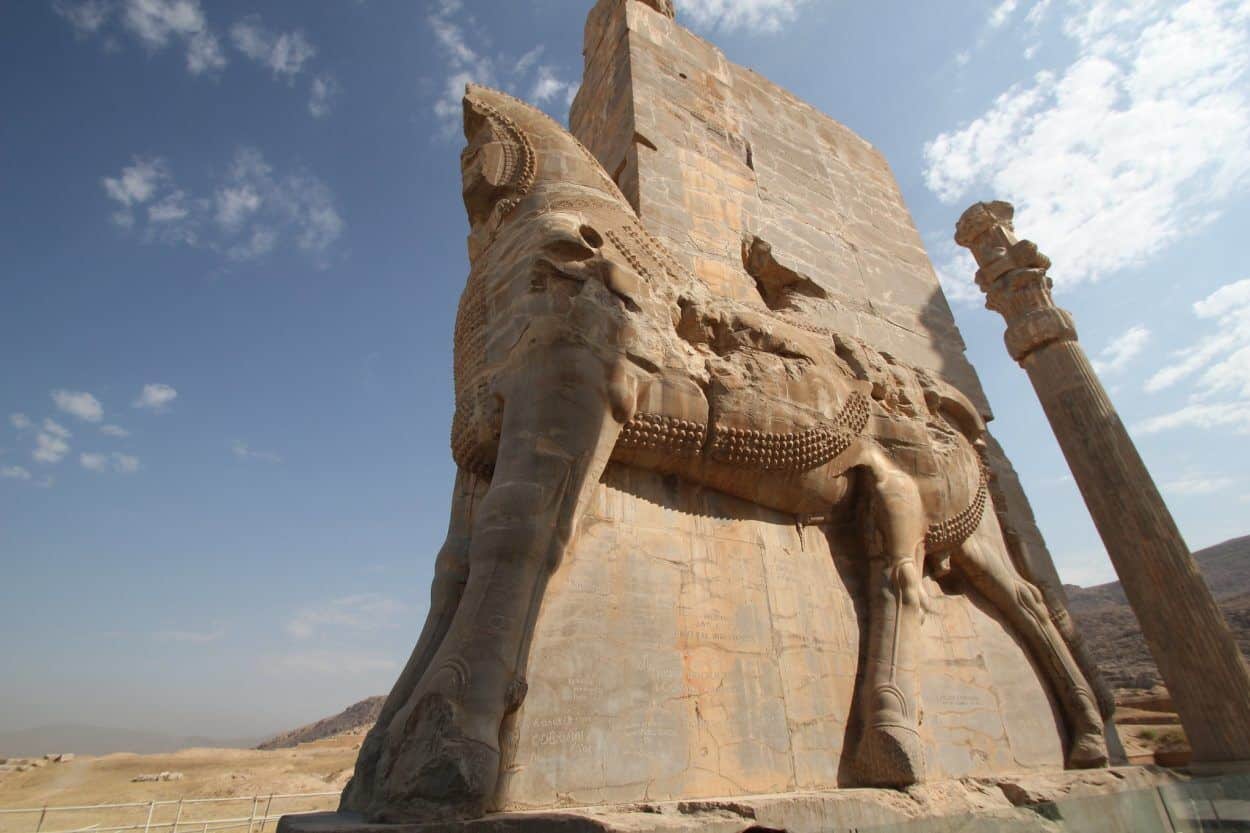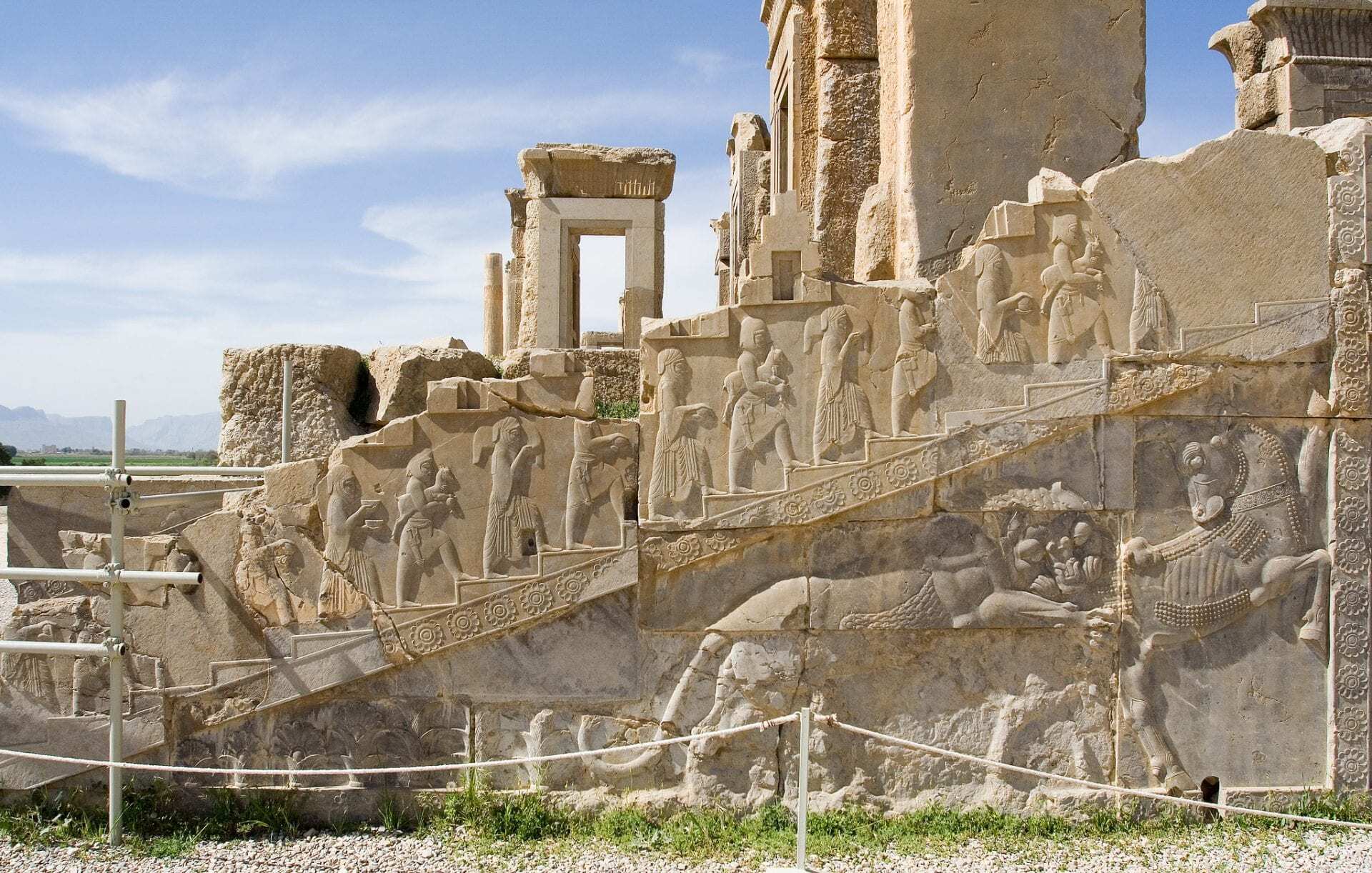Persepolis is an archaeological site and the ceremonial capital city of the Achaemenid Empire, also called the First Persian Empire that covered an area of 2.1 million square miles from the Balkans and Eastern Europe proper in the west, to the Indus Valley in the east.
The city was constructed northeast of the city of Shiraz in Fars Province, Iran, near the small river Pulvar, which flows into the Kur River.
The first evidence of occupation dates from around 515 BC, possibly established by Cyrus the Great (who founded the Achaemenid Empire), but the first phase of major construction was during the reign of Darius I.

Darius I ordered the construction of a large hypostyle hall called the Apadana, the Tripylon as well as the main imperial treasury and civic buildings that were completed during the reign of his son, Xerxes I.
The city was organised on a large terrace, accessed by the “Great Staircase” that led to the Great Place of Xerxes, the Palace of Darius, the Palace of Xerxes, and the Second Propylon guarding the entrance to the Palace of 100 columns.

Although described as the ceremonial capital, the function of Persepolis is debated amongst archaeologists and academics. There were much larger cities in the Achaemenid Empire and Persepolis appears to be occupied seasonally during Nowruz, the Persian New Year, possibly as a site for offering tributes to the Empire by the tributary kingdoms and surrounded city-states.
After Alexander the Great invaded the Achaemenid Empire in 330 BC, Alexander looted the city, evident by a layer of burning in the archaeological record. It is speculated that this may have been in retribution for the burning of the Acropolis of Athens during the second Persian invasion of Greece.

The scholar and historian Abu Rayhan al-Biruni, who lived during the Islamic Golden Age wrote in his ‘Chronology of the Ancient Nations’ that “Alexander burned the whole of Persepolis as revenge to the Persians, because it seems the Persian King Xerxes had burnt the Greek City of Athens around 150 years ago. People say that, even at the present time, the traces of fire are visible in some places.”
In 316 BC, Persepolis was still a major population centre in the Macedonian Empire, but began to decline under the rule of the Seleucid Empire. The vast palaces were still a ruin from the fire and became known to local inhabitants as ‘the place of the forty columns’ owing to the still-remaining columns standing among the abandoned city remains.
Header Image Credit : Ivar Husevåg Døskeland





